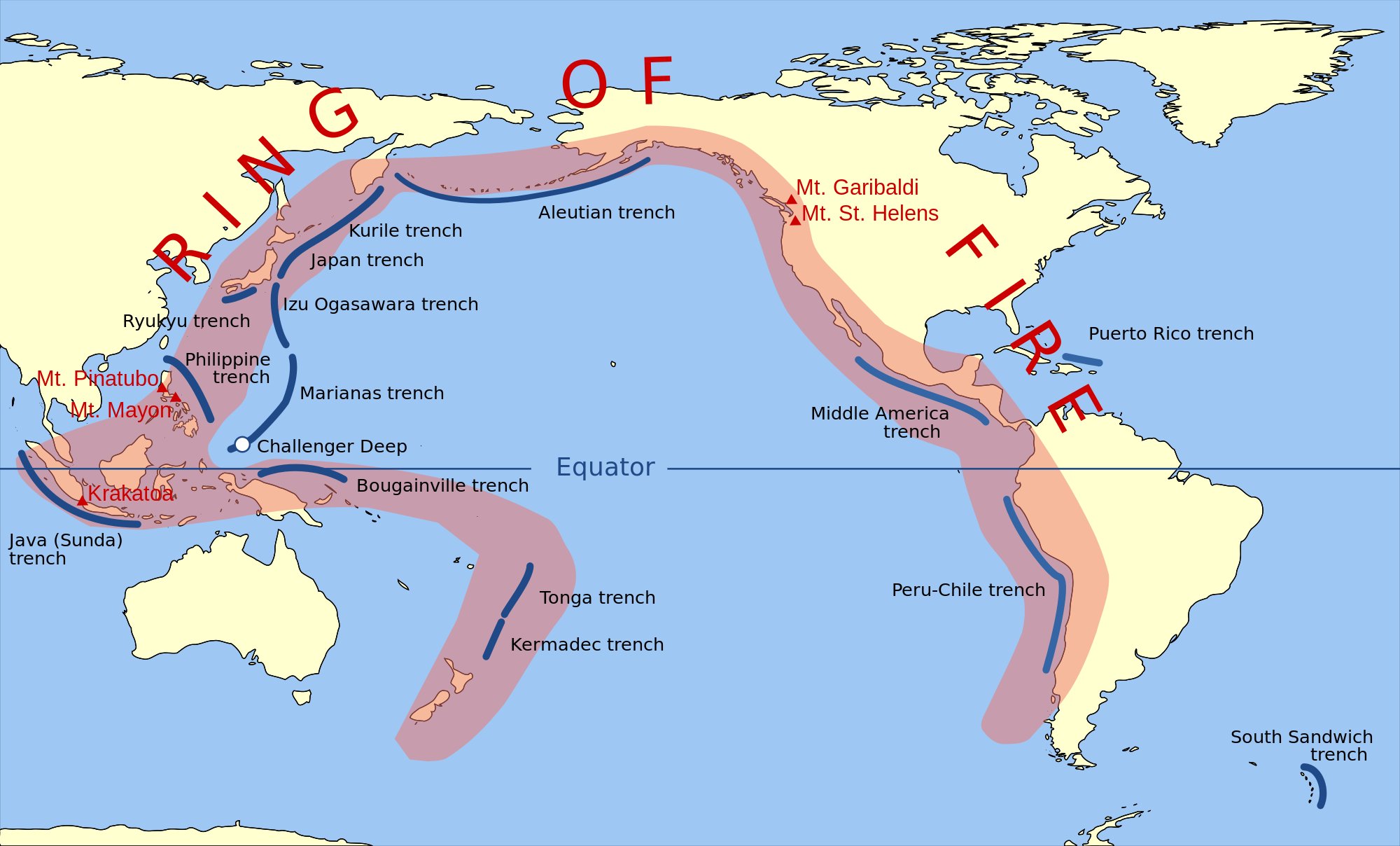
The Pacific Ring of Fire, an area of active seismic and volcanic activity, has perked up in the last 24 hours. The United Nations office of Disaster Risk Reduction released a statement earlier today, commenting on the recent activity around the world. The Ring of Fire is a major area in the basin of the Pacific Ocean where a large number of earthquakes and volcanic eruptions occur. In a 25,000 mile horseshoe shape, it is associated with a nearly continuous series of oceanic trenches, volcanic arcs, and volcanic belts and plate movements. It has 452 volcanoes which amount to more than 75% of the world’s active and dormant volcanoes.
In the Philippines, the Mayon Volcano erupted, forcing thousands to evacuate. More than 56,000 villagers are now in emergency shelters as the Philippines’ most active volcano continues to threaten a larger, potentially deadly eruption. More than 30,000 ash masks and about 5,000 sacks of rice, along with medicine, water and other supplies have been distributed at the shelters. One disaster relief official warned that anyone who does not evacuate faces “a death penalty”. “If pyroclastic flows hit people, there is no chance for life,” Cedric Daep told a news conference. “Let us not violate the natural law, avoid the prohibited zone, because if you violate, the punishment is the death penalty.” Authorities raised the alert level from three to the second-highest level of four on Monday, meaning that a “hazardous eruption is imminent”, and the Philippine Institute of Volcanology and Seismology has previously warned of “the danger of rockfalls, landslides and sudden explosions”.

In Japan, fresh volcanic activity created an avalanche that led to one death. A member of Japan’s self-defence forces died and about a dozen skiers were injured after a volcano erupted near a ski resort, triggering an avalanche and sending rocks raining down on the slopes. The skiers were injured when they became trapped by the avalanche or were hit by falling volcanic rocks from Mount Kusatsu-Shirane, according to local media. Of the injuries, five were serious according to rescuers. Five other members of Japan’s ground self-defense force who were taking part in training exercises in the area were also rescued, some with injuries including fractures.
In Indonesia, a 6.4 earthquake struck a community outside of Jakarta, jolting and swaying buildings there. The earthquake struck off the coast of Lebak, Banten , the Meteorology, Climatology and Geophysics Agency (BMKG) reported, but no tsunami warning was issued and there were no immediate reports of casualties or damage. Office workers who just came back from their lunch break scrambled to find exits, trying to get out of tall buildings and found safe ground. “I was so scared and tried to exit the building when the second tremor hit at around 1:20,” Maria Anindita said after returning to her desk on Tuesday.
In Alaska, a 7.9 earthquake led to a Pacific wide tsunami alert, although the threat of tsunami was later dismissed. The quake struck at 12:31am local time about 181 miles southeast of Kodiak, Alaska, at a depth of about 6.5 miles. At least 17 aftershocks were recorded with magnitudes in the 4 to 5 range after the initial quake. Tsunami Watches were issued for the Canadian West coast, the US coast from Washington to California, and for the Hawaiian Islands. The watches were cancelled after after scientists determined no tsunami threat from the specific quake, according to the National Weather Service’s National Tsunami Warning Center.